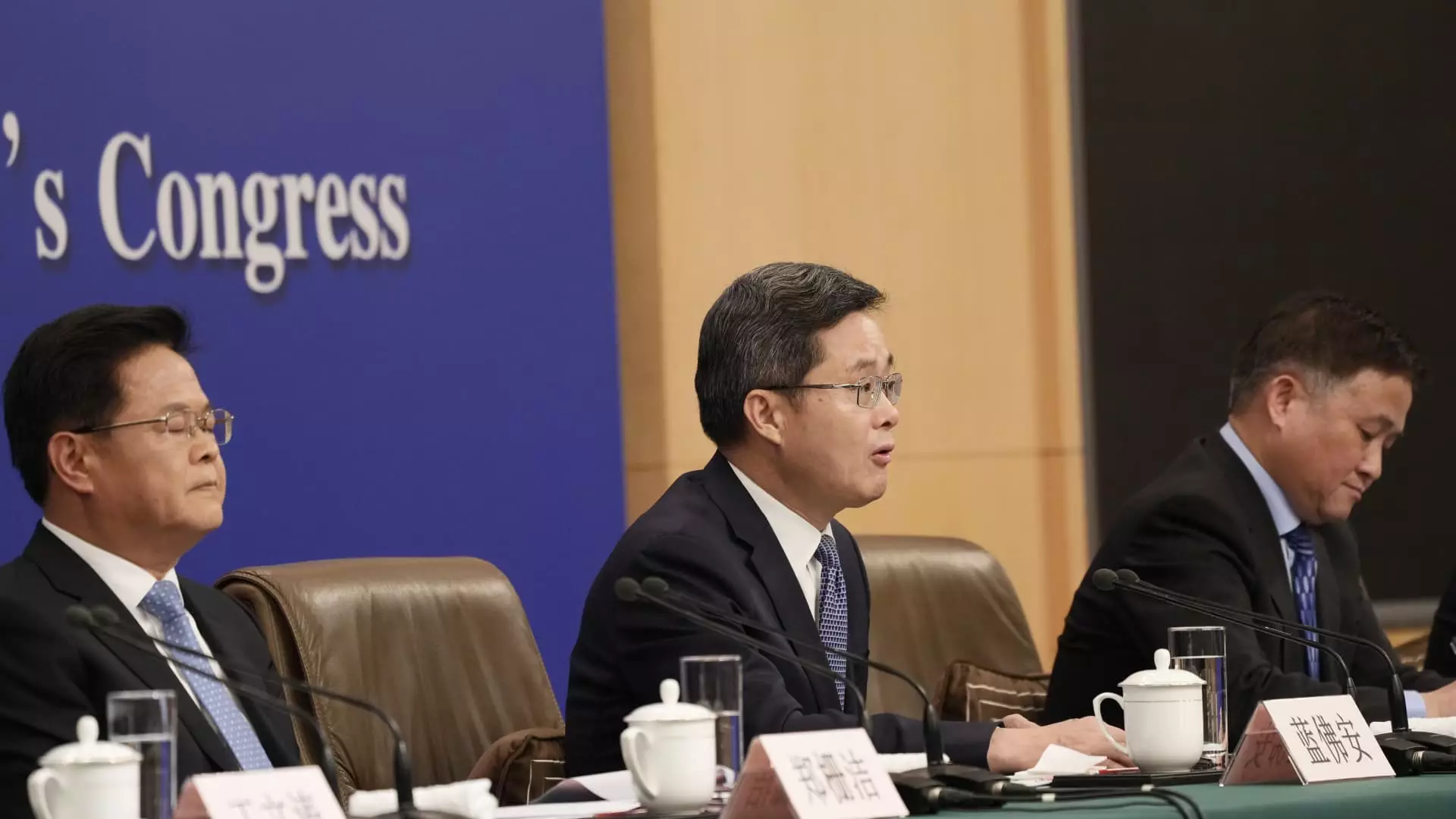In recent discussions held by China’s Minister of Finance, Lan Fo’an, a notable nuanced approach towards fiscal policy and government debt has emerged. He highlighted that the central government possesses the capability to enhance both the national debt and budget deficit, aiming to address pressing economic challenges. While these discussions signal potential actions, concrete policy measures remain in limbo, leaving economists and financial analysts anticipating a decisive direction from Beijing.
The four critical policies that have attained a certain level of decision-making are primarily centered around providing robust support to local governments grappling with mounting debt strains and stabilizing the distressed real estate market. In addition, the focus also extends to significant state-owned banks and initiatives aimed at boosting youth employment. If effectively executed, these measures could simulate necessary growth, especially in light of current economic hurdles.
Despite the acknowledgment of needing further fiscal support, the Chinese government has yet to unveil any substantial fiscal stimulus strategies. This has generated a mixed response from economists who note that the lack of action could thwart recovery efforts. Following a high-profile meeting led by President Xi Jinping in late September, there were calls to reinforce monetary and fiscal policies, but specific plans were conspicuously absent, leaving the market apprehensive.
Analysts estimate that for China to navigate its economic challenges adequately, fiscal stimulus ranging from 2 trillion yuan ($283.1 billion) to as much as 10 trillion yuan may be required. Notably, Ting Lu, the chief economist at Nomura, emphasized a crucial aspect: the approval for any stimulus package must pass through China’s parliament, which is expected to convene later this month. This legislative requirement could delay the implementation of supportive measures that the economy urgently needs.
Recent economic indicators illustrate a slow recovery phase, with China’s retail sales witnessing only modest growth and the real estate sector maintaining its downward trajectory. The GDP growth rate, which saw a 5% rise in the initial half of this year, has sparked concerns regarding the feasibility of achieving the full-year target of approximately 5%. The upcoming release of the third-quarter GDP by the National Bureau of Statistics on October 18 is anticipated with bated breath, as it could provide crucial insights into the current economic state.
Market reactions over the past week showcased significant volatility following the reopening after the weeklong holiday. Initially fueled by optimism surrounding anticipated stimulus measures, mainland Chinese stocks saw gains; however, this momentum was fleeting. Major indexes returned to levels reminiscent of late September as the euphoria dwindled in light of no clear fiscal policies being articulated.
In an effort to stabilize and invigorate investor confidence amidst this economic tumult, the People’s Bank of China has made strategic cuts to interest rates and extended real estate support measures, responding to global monetary trends. The bank’s coordinated approach, accompanied by initiatives enabling institutional investors to access nearly $71 billion for stock investments, reflects a proactive stance in boosting market liquidity and investor engagement.
The National Development and Reform Commission (NDRC), tasked with economic planning, accentuated its commitment to accelerating projects funded by an earmarked 200 billion yuan, originally slated for investment in the following year. However, the NDRC’s absence of additional stimulus announcements has continued to sow seeds of uncertainty among investors and analysts.
As China navigates through these uncertain economic waters, the question of fiscal responsibility looms large. The balance between addressing immediate financial pressures and ensuring sustainable growth through prudent fiscal policies remains at the forefront of discussions. While the potential for additional debt and stimulus exists, the fine line between proactive intervention and fiscal excess must be tread carefully. With the third-quarter GDP release on the horizon, it is evident that stakeholders are eager for clarity that might lead to more decisive economic actions from the Chinese government. For now, the markets and citizens alike will be holding their breath in anticipation of the next steps from policymakers.

Leave a Reply